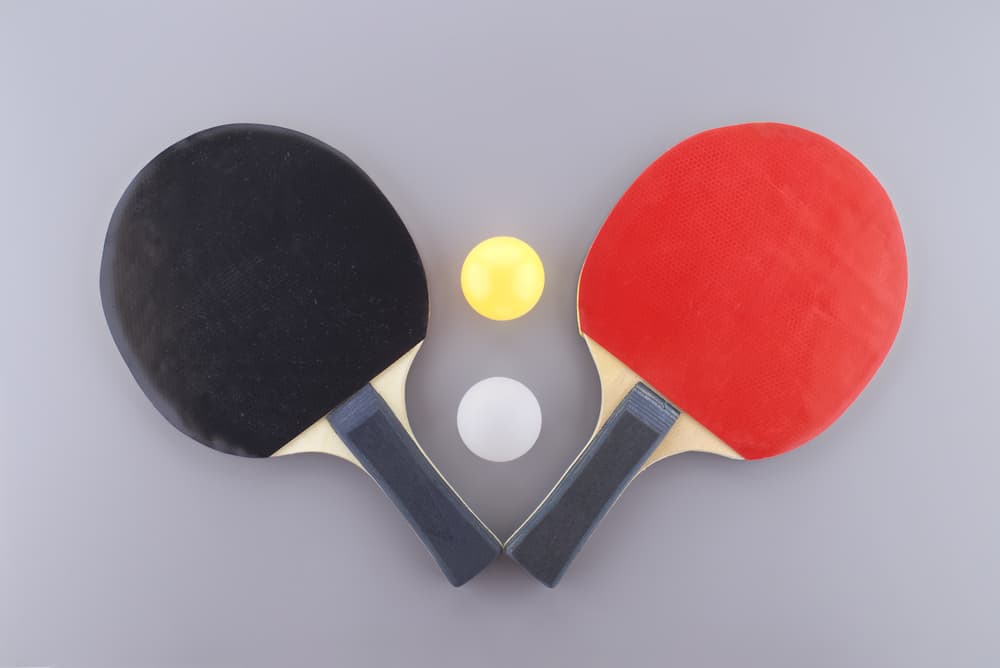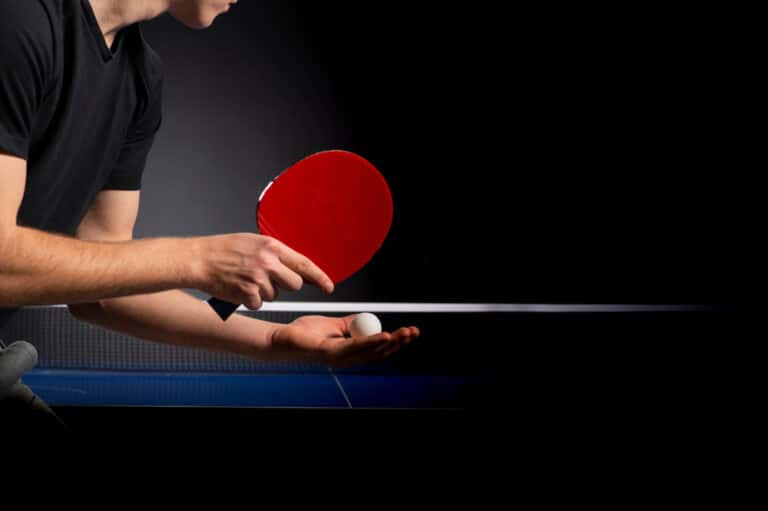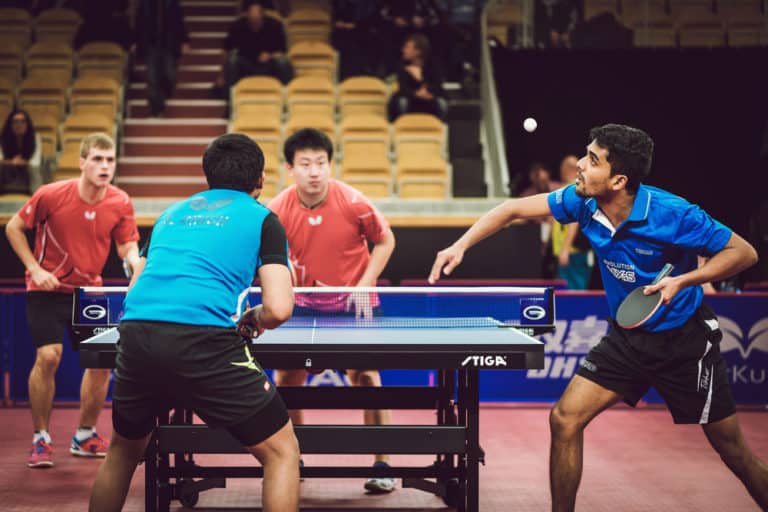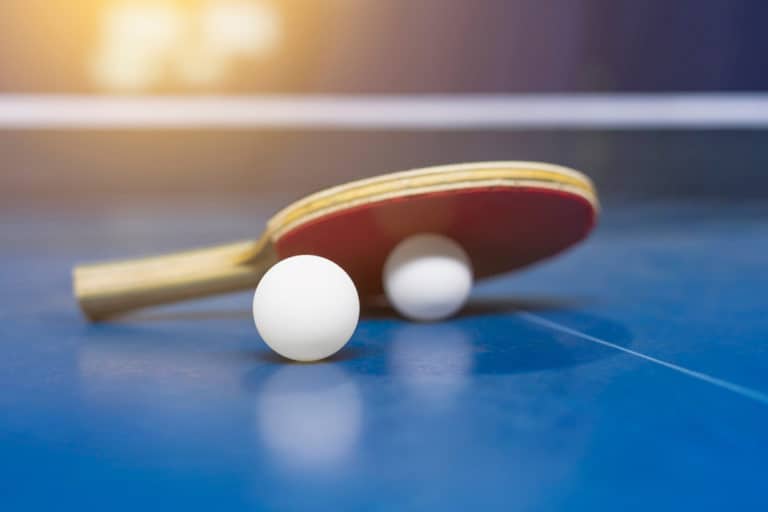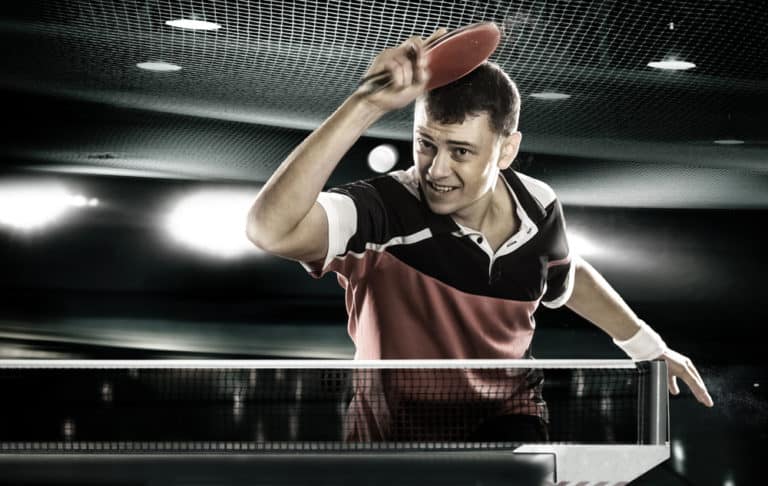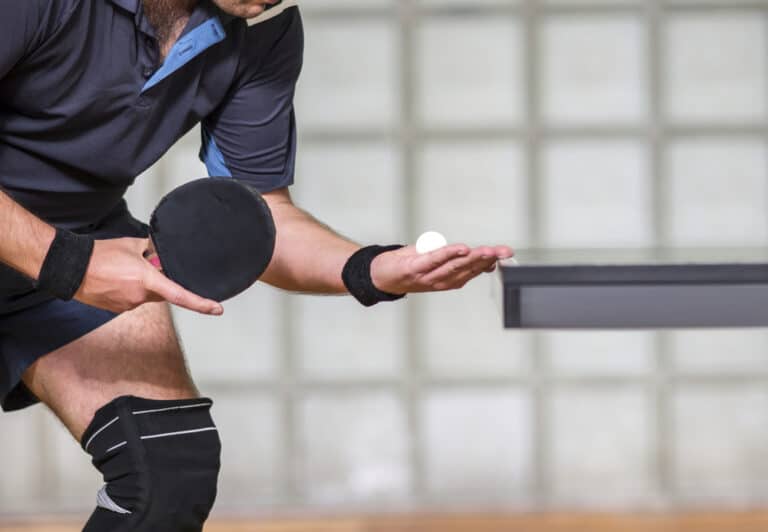What Size Should A Table Tennis Racket Be?
Unlike ping pong, which uses standardized paddles for gameplay, table tennis rackets come in many different variations. Due to this, many players find it somewhat difficult to choose the appropriate racket for their needs and play style. Many table tennis players often wonder what size their table tennis racket should be!
Table tennis rackets are between 5.9 and 6.7-inches long, including the blade and handle. The handles are between 1 and 1.3-inches wide, with a 5.9-inch wide blade. The total thickness of a table tennis racket is between 0.75 and 0.94-inches thick, with a total weight between 0.35 and 0.45 pounds.
If you’re wondering about the dimensions of table tennis rackets, we’ll break down everything you should know. Once we’ve discussed the size of table tennis rackets, we’ll explain what differentiates these rackets from ping pong paddles, how to choose the best racket, and which rackets professional players use!
What Size Should Your Table Tennis Racket Be?
Before purchasing a table tennis racket, it’s important to know what dimensions your racket should be. Ultimately, considering this factor will allow you to buy the best table tennis bat for your specific needs and play style. When discussing what size your table tennis racket should be, there are four main aspects to discuss: length, width, thickness, and weight.
Table Tennis Racket Lengths
The average length of a table tennis racket is between 9.4 and 10.2-inches long. This refers to the overall length. Typically, the handle is between 3.75 and 3.93-inches. The blade or wooden part of the racket is generally between 5.9 and 6.7-inches long.
Table Tennis Racket Widths
The average width of a table tennis racket varies between the handle and the racket’s blade. The handles of table tennis rackets are generally between 1 and 1.3-inches wide, while the racket blade is approximately 5.9-inches wide.
Table Tennis Racket Thicknesses
The average thickness of a table tennis racket depends on the thickness of the handle, blade, and rubber. Table tennis bat handles are usually between 0.8 and 0.9-inches thick, while the blade is generally 0.63-inches thick. The rubber will be between 0.06 and 0.16-inches thick. The total thickness of the racket with all these components will be between 0.75 and 0.94-inches thick.
Table Tennis Racket Weight
The average weight of a table tennis racket is between 0.35 and 0.45 pounds. Ultimately, weight can vary between rackets depending on the type of wood used. However, as a rule of thumb, heavier rackets are of higher quality than lighter ones. Lighter bats are typically considered hobby rackets.
Are Table Tennis Rackets The Same As Ping Pong Paddles?
Although there are many similarities between table tennis and ping pong, table tennis is an Olympic sport, and ping pong is not. Due to this, many players have wondered whether table tennis rackets are the same as ping pong paddles. Despite the similarities between these games, table tennis rackets are completely different from ping pong paddles.
When it comes down to table tennis, standardized equipment is used. In terms of the racket, a sandpaper paddle is used, which is designed with five layers to reduce the spin speed and slow down the ball’s speed. Instead of two rubbers like a table tennis racket, ping pong paddles have two laminated layers.
While ping pong paddles allow players to have greater control over the ball, the sandpaper construction of the paddle is known to reduce the dynamics while playing. Furthermore, the materials used to construct sandpaper paddles are much lower quality than the materials used in the construction of table tennis rackets.
Unlike the simple task of buying a standardized ping pong paddle, there are numerous aspects to consider when choosing the perfect table tennis racket for your needs. Ultimately, this is the reason many players find it harder to purchase a table tennis racket that suits their play style.
Despite the difficulty of finding the right table tennis racket, these rackets offer players a faster game pace than ping pong. However, there is also less ball control with these rackets. When purchasing a table tennis racket, you need to consider your ideal racket size, whether you want a readymade or custom racket, whether your racket should be offensive or defensive, and the type of grip you need.
Due to the many table tennis racket variations out there, these rackets will cost more than standardized ping pong paddles. Since you’re paying more for your racket, you want to ensure you choose the right table tennis racket for your needs. Luckily, we’ll help you do just that in the following section!
Choosing The Right Table Tennis Racket For Your Needs
Due to the vast differences between table tennis rackets and ping pong paddles, it can be much harder to select the right table tennis racket for your specific needs. To help you pick the perfect racket, we’re going to outline the different considerations you should keep in mind, including racket size, type, play style, and grip.
Consider The Table Tennis Racket’s Size
When purchasing a table tennis racket, the dimensions of the racket are an important consideration. Of course, we explained the average dimensions of these rackets earlier. By ensuring that the table tennis bat you purchase meets these requirements, you can ensure you’re purchasing a proper racket.
Furthermore, certain dimensions can give you valuable insight into the quality of the racket, particularly the weight. As we explained earlier, lighter rackets are typically intended for recreational use. The heavier a racket is, the higher quality the racket will be.
Choose Your Type Of Table Tennis Racket
Before we discuss considerations regarding your play style and grip, let’s outline the two main types of table tennis rackets that are available today. While it’s possible to purchase a pre-made racket, it’s also possible to get a customized table tennis racket made.
Pre-Made Table Tennis Rackets
Tennis table rackets that are pre-made or readymade are commonly used by beginners or those who only play table tennis occasionally. When purchasing a pre-made racket, preselected rubbers will be attached to the blade (wooden part of the racket) by the manufacturer.
Due to this, you won’t be able to customize the different components of your table tennis racket, such as the blade and rubber. However, purchasing a readymade table tennis racket will be cheaper and easier than purchasing individual components to assemble your own racket.
Customized Table Tennis Rackets
Customized table tennis rackets are often used by professional players and those who compete in competitive table tennis games. If you decide to get a custom table tennis racket, you’ll need to purchase the different components yourself.
Once you’ve purchased all the necessary components, you’ll need to assemble the racket. However, players might be able to find some services that can help you assemble a custom table tennis racket. Ultimately, this racket option gives you more freedom in crafting the best racket for your needs and play style.
Evaluate Your Table Tennis Play Style
When purchasing a tennis racket, you’ll be able to select a racket based on the nature of the game. Ultimately, that’s why your table tennis play style plays a crucial role in determining the type of racket you need to purchase. Once you’ve evaluated your play style, you’ll be able to decide whether you need a defensive or offensive table tennis racket.
Defensive Table Tennis Rackets
With defensive table tennis rackets, the spin put on your ball by the opponent is reversed. There are two main types of defensive table tennis rackets. Antispin rackets feature a slick soft sponge surface, which prevents you from creating spin on the table tennis ball with this type of racket. Long pips table tennis rackets have longer and thinner pips, with an alternating racket texture.
Offensive Table Tennis Rackets
On the other hand, offensive table tennis rackets have increased spin and more accurate hitting. With this type of racket, you’ll be able to make stronger offensive shots to win rallies. Once again, there are two main types of offensive rackets. Inverted table tennis rackets have inward-facing pips and a flat surface to increase the control over the ball. Pips-out rackets have outward-facing pips and a rough texture, reducing spin on the ball while allowing you to hit the ball harder.
Pick A Grip Type For Your Table Tennis Racket
In addition to deciding whether you need a defensive or offensive racket, your play style will also help determine which type of racket grip you require. Table tennis racket grips are divided into two pain types: Penhold grips and shake-hand grips.
Penhold Grip
As the name of this grip alludes to, the player’s hand is positioned as if they were holding a pen. This type of grip offers a great range of motion, which improves the player’s control over the racket. There are two types of Penhold grips: Chinese and Japanese Penhold grips. However, these grips are not widely used at professional levels, making them better suited to amateurs and occasional players.
Shake-Hand Grip
Once again, the name of this table tennis grip alludes to how the user holds the racket. With a shake-hand grip, the racket is held as if the player was shaking hands with someone. These grips are commonly used at professional levels by international players. One of the main advantages of a shake-hand grip is that it allows for backhand play. There are three types of shake-hand handles players can choose from.
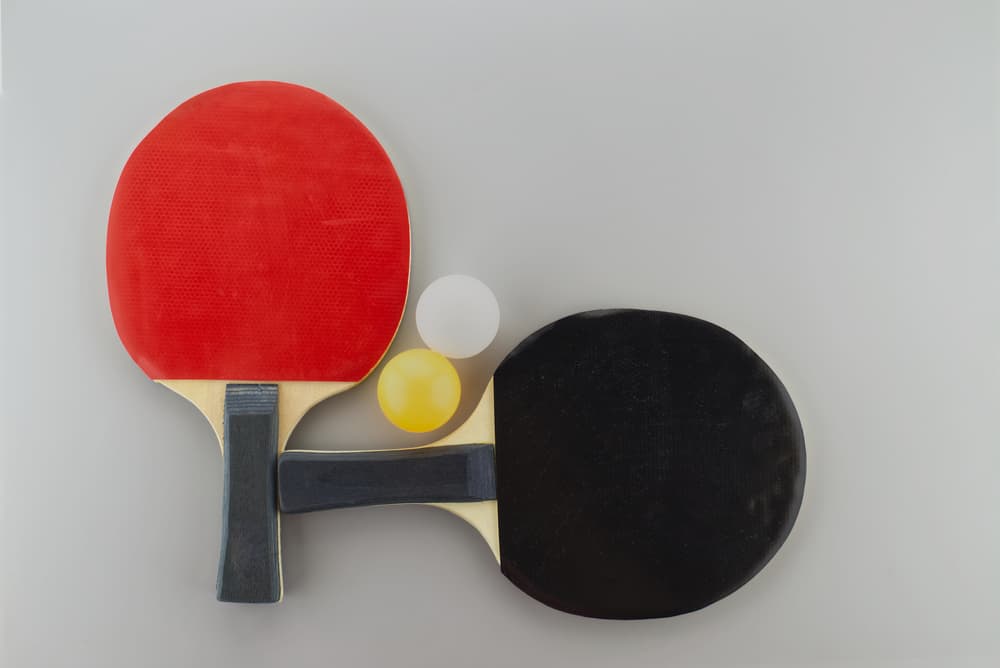
What Table Tennis Rackets Do Professional Players Use?
Now that we’ve discussed what size your table tennis racket should be, you might be wondering about the rackets that professional players use. From Chen Meng to Timo Boll, we’ll outline the rackets used by six of the world’s best table tennis players!
Chen Meng
Chen Meng is a professional Chinese table tennis player, having joined her national team when she was only thirteen years old. Chen Meng is known to use a Stiga Carbonado 45 blade with rubber from Butterfly Tenergy 64. Meng uses a shake-hand grip with her table tennis rackets.
Dimitrij Ovtcharov
Dimitrij Ovtcharov is a German table tennis player who is known for his offensive play style. Like Cheng Meng, Ovtcharov also uses a shake-hand grip with his racket. Ovtcharov is sponsored by Donic, with an Original Senso Carbon blade and a Bluefire M1 rubber.
Kanak Jha
Kanak Jha is an American table tennis player and four-time consecutive US national champion between 2016 and 2019. Currently, Jha uses Butterfly components for his racket. Kanak Jha uses a shake-hand grip, a Butterfly Time Boll ALC blade, and rubber from Butterfly Tenergy 05.
Lily Zhang
Lily Zhang is another American table tennis player and five-time US national champion. Zheng also competed in the 2012 Summer Olympics that were hosted in London. In terms of her equipment, Zheng exclusively uses Joola gear. Her table tennis blade is a Joola Nobilis PBO-C, while she uses a Joola Rhyzer Pro 50 rubber.
Petrissa Solja
Petrissa Solja is a German player who won silver at the 2016 Summer Olympics that were hosted in Rio de Janeiro. Like many of the professional players on this list, Solja also uses a shake-hand grip. Like Lily Zhang, Solja also utilizes Joola equipment. In fact, Solja utilizes the same Joola Nobilis PBO-C blade and Joola Rhyzer Pro 50 rubber as Zheng!
Timo Boll
Rounding off our list is Timo Ball, a German player who ranked tenth in the ITTF’s world rankings in 2021. Boll is truly a table tennis legend with an iconic offensive play style. Boll uses a shake-hand grip. Like Kanak Jha, Boll exclusively uses Butterfly equipment, with the Butterfly Timo Boll Spirit blade and the Butterfly Dignics 09 rubber.
Conclusion
As we discussed in this article, the size of a table tennis racket is broken down into length, width, thickness, and weight. With the handle and blade, these rackets are between 5.9 and 6.7-inches. The handle has a width of up to 1.3-inches, while blades are commonly 5.9-inches wide. The total thickness of a racket with all the components is between 0.75 and 0.94-inches, with a total weight between 0.35 and 0.45 pounds.
Sources
- https://www.nbcolympics.com/news/table-tennis-101-equipment
- https://www.allabouttabletennis.com/table-tennis-racket.html
- https://joolausa.com/a-guide-to-understanding-table-tennis-blades/
- https://branded.disruptsports.com/blogs/blog/difference-between-ping-pong-paddle-and-table-tennis-bat
- https://www.sportsrec.com/270866-parts-table-tennis-racket.html

